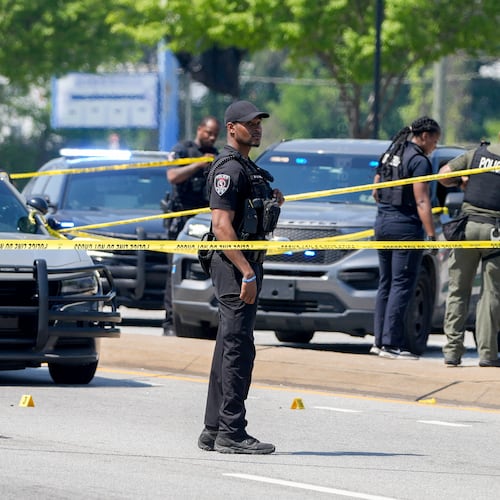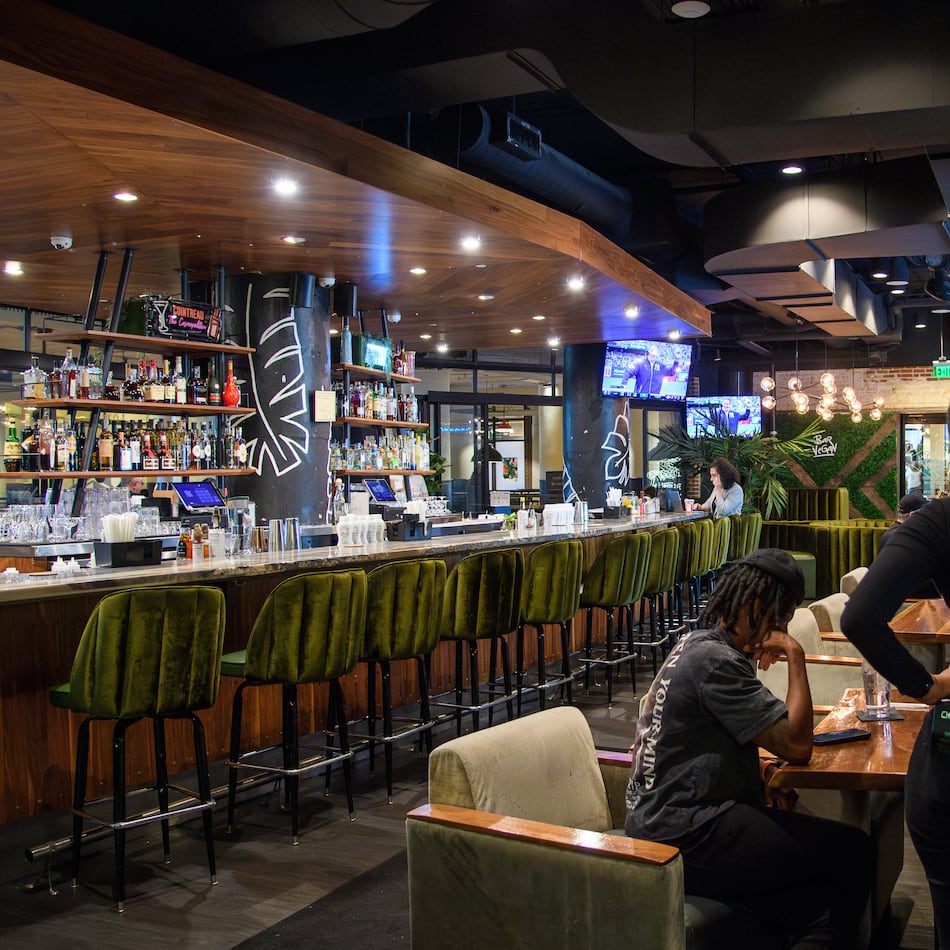The woman was fun, pretty and their first date went well. But when Greg, a 61-year-old featured on a Netflix dating show filmed in metro Atlanta, discovered his date lived more than an hour away in Sandy Springs, he balked.
“You haven’t been married in 12 years. You’re looking for somebody to spend the rest of your life with,” said dating coach, Logan Ury, during a scene from “The Later Daters.” “Are you really gonna let metro traffic get in the way of finding love?”
“I will,” said Greg, with a straight face.
After the clip went viral on social media, commenters elsewhere wanted to know, is it really that bad? The Atlantans' reply: Yes.
For some metro Atlanta singles looking for love, how far they live from a potential match can be a deal breaker. But many are willing to commute — as long as they can plan ahead and only if the connection is worthwhile.
Dating apps make it easy to filter out prospects based on distance, and their data suggests Atlantans are willing to travel farther on average than users in some other big cities.
Still, traffic can be unbearable during rush hour, and some who live inside the Perimeter, or “ITP,” refuse to venture beyond I-285.
Dhruv Alexander, a 32-year-old living in Atlanta’s Reynoldstown neighborhood, travels to the office to work in-person three times a week. Between that and other demands on his time, journeying to the suburbs for a date is a nonstarter.
“It exhausts me,” he said.
In sickness and in traffic
Anyone dating in metro Atlanta is likely familiar with the predicaments Brandon Kingsbury has faced trying to crisscross the metro to meet someone new.
Once, he planned to meet a date at 7 p.m. in Dunwoody, about halfway between where he lives in Woodstock and where she lives in Duluth.
His GPS began adding time to his drive as traffic worsened. When he texted his date that he would be five minutes late, she, too, said she was stuck in traffic.
Seven minutes, 12 minutes, 20 minutes — as the time piled on, they both apologized to each other over text.
“It was almost like clockwork, because we were also coming from different directions,” said Kingsbury, 42. “We still wound up getting there, both about a half-hour late.”
Another time, Kingsbury stopped seeing a Buckhead woman after he made several treks to visit her, but she was unwilling to drive out to meet him.
He thinks those who live in the city proper are more strongly opposed to breaching the barrier of I-285 than suburbanites.
He could be onto something.
“I always joke that I have to scan my passport if I leave the Perimeter,” said Lauren Leibel, who lives in West Midtown. “I think there’s definitely a mental divide between OTP and ITP.”
It goes deeper than just traffic, Leibel said. She would prefer to find someone who is also in Atlanta because they are more likely to enjoy city life.
The long and complex split between Atlanta and its suburbs dates back decades, encompassing shifts when white residents left the city in droves, highway construction separated communities, the suburbs sprawled and population boomed.
Such changes have impacted not just neighborhoods but the way some view one another — including when dating.
“There’s a huge lifestyle difference between the people who live in Atlanta proper and the surrounding suburbs,” Joe Brennan, who lives in Midtown, said at a recent singles event. “Even Buckhead feels like its own different city sometimes.”
Going the distance
So just how far are Atlantans willing to drive for love?
The rise of dating apps opened singles up to a much larger pool of people to choose from beyond their circle of friends, neighborhood or workplace. A 2023 Pew Research study found one in 10 adults who are currently married, living together or in a committed relationship met their partner through an app.
Tinder, Bumble and Hinge allow users to filter for potential matches within a certain radius of their location.
Tinder users in metro Atlanta restrict their matches to an average distance of about 42 miles, according to data the company provided to The Atlanta Journal-Constitution. That’s a wider range than in other major metros such as New York City and Philadelphia, where averages fall around 30 miles. In sprawling cities like Dallas and Houston, the average distance is about 44 miles.
A Bumble spokesperson said their Atlanta users are willing to travel 34 miles — farther than daters in New York City, Miami and Chicago.
Leibel set her distance maximums on Hinge to about 10 to 15 miles from her Midtown home. She said that was generous compared to some friends who will only match with people up to 5 miles away.
Some are abandoning the swiping game altogether in favor of in-person meetups. The bowling alley and games venue Main Event Atlanta hosted a “Pitch a Friend” event just before Valentine’s Day for people to promote their single pals to other singles in hopes of making a match.
Those who prefer meeting in real life first said distance matters much less after they’ve hit it off with someone.
“I feel like you will find a way to make it work if you really care about the person,” said Tuan Ta, a Midtown resident who once dated a woman in Cumming. “But if you don’t care about the person — even if they’re right next door, you wouldn’t walk over.”
Abby Larner cofounded Green Flag Date, a service that hosts group activities in the city for people who want to meet others with similar interests. That in-person bonding can pave the way for an authentic connection that trumps distance or traffic, she said.
“You get to know somebody, and then if you really like them, the distance matters less,” Larner said.
Christian Pitt, another Midtown resident, used to drive over an hour to Gainesville to see his then-girlfriend. Now, he prefers to date locally and meet up in places he can walk to. But he will go farther, as long as he can plan ahead.
“I just don’t get on the road during rush hour. That’s the only way to beat the traffic,” said Pitt, 30. “If you’re traveling during rush hour, then that’s your fault.”
About the Author
Keep Reading
The Latest
Featured



